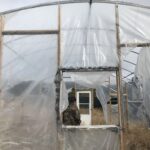Cockburn Sound, a calm waterway tucked behind an island near Fremantle in Western Australia, is about to become much better known thanks to the trilateral technical agreement between Australia, the United Kingdom and the United States, known as AUKUS. To echo the sentiment of my late colleague Professor Desmond Ball, after Pine Gap this military base on the southwestern coast of Australia facing the Indian Ocean could be described as the second “suitable piece of real estate”.
The first US Navy Virginia class nuclear-powered submarine visited Australia in the second half of 2023 and that is the start of what is to be the new normal. The Submarine Rotational Force-West (SRF-West), as this grouping is being called, will be supported by advanced nuclear-powered submarine maintenance facilities being built at Garden Island in Cockburn Sound.
Cockburn Sound provides a direct line of shot for submarines seeking to operate in or near the key Southeast Asian straits, let alone anywhere across the Indian Ocean.
HMAS Stirling is the Royal Australian Navy base at Garden Island, housing 12 fleet units. These include five Anzac class frigates and the six Collins class submarines as well as a fleet replenishment unit. The base also houses the Marine Support Facility for vessel repair and refit. This is due to be significantly expanded to meet the surge in requirements of servicing the nuclear propulsion submarines.
The anticipated rotation of submarines in the coming years will see HMAS Stirling grow with the investment of $8 billion. That will include wharf upgrades and expansion of maintenance training and an expansion of the logistical capacity to coincide with the more frequent and longer visits of American and British submarines in the next couple of years. This then will lead to hosting rotations of UK and US nuclear propulsion submarines as part of SRF-West from 2027. This in turn, will be the home base for the Australian nuclear propulsion submarines, which are expected to be delivered from the early 2030s.
The future, no doubt, will look different, but what most people may not yet fully appreciate is that the geostrategic significance of these submarine facilities echoes its utility from 80 years back. Cockburn Sound provides a direct line of shot for submarines seeking to operate in or near the key Southeast Asian straits, let alone anywhere across the Indian Ocean.
With the Malacca Strait effectively remaining the jugular vein of the Indo Pacific, through which the vast majority of East Asian trade transits, a robust submarine facility at Cockburn Sound can be expected to complicate the planning of any would-be adversary seeking to intimidate, cajole, threaten or directly confront Australia and its interests. This is a large part of what submarine deterrence is about.
There are, no doubt, more secrets on how AUKUS came to be, but its strategic rationale and the trusted collaboration upon which it builds is now a well-established fact. With fresh challenges echoing those from an earlier generation, that trusted collaboration is more important than ever. And the deterrent effect is already kicking in.











